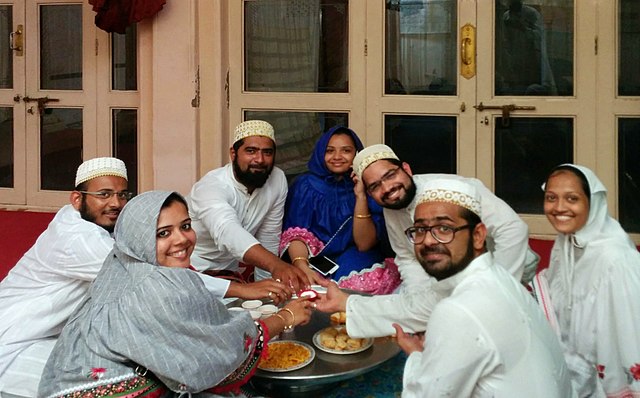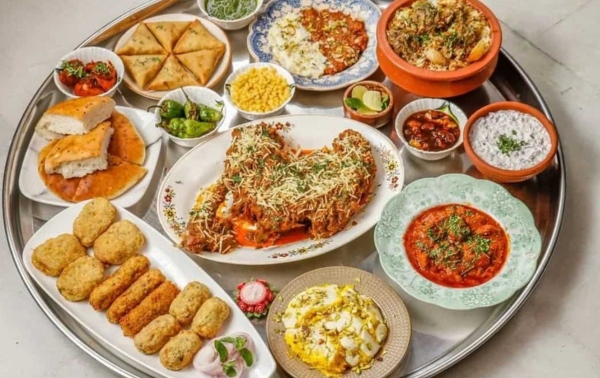With influences from Yemen, Persia, and India, Bohri cuisine reflects the rich history and enduring traditions of the Dawoodi Bohra community. More than just a collection of dishes, it embodies a philosophy of communal dining, mindful consumption, and the celebration of heritage.
The Bohras, originating from Yemen, settled in Gujarat, India, centuries ago. From hearty Bohri biryani to soul-warming Himachal tangdi, each dish tells a story of celebration and the art of communal dining. Bohri cuisine is known for its unique dishes like Lagan Ni Seekh, Dabba Gosht, Bohri Biryani, and Massor Pulav, each showcasing a mix of ingredients. Dishes like the iconic Daabeq, a thin, crispy flatbread layered with minced meat and drizzled with ghee, whisper the influence of Yemeni flatbreads. In contrast, the fragrant Memoni Biryani, a rice dish infused with saffron and spices, hints at Persian roots. Fresh vegetables from Gujarat’s fertile lands find their way into curries like the mild and flavorful Khadki, while spices like nutmeg and mace add a touch of warmth to Bohri delicacies. Some key ingredients used in Bohri cuisine include dry fruits, rawa, desiccated coconut, jaggery, mutton, rice, lentils, yogurt, wheat, ghee, apricot, cashew, onion, tomato, potatoes, bread, sugar, and various spices. However the dish most associated with Bohri food in the popular imagination of the cuisine is the keema samosa. These ingredients are combined in unique ways to create a diverse range of flavorful dishes that are characteristic of Bohri cuisine.

The elaborate dining etiquette, with its ritual dos and don’ts in accordance with Islamic injunctions, underscores the importance of respect for food and each other. The centerpiece of Bohri culinary tradition is the “Thaal,” a large, round metal platter. The thaal is raised upon a kundali or tarakti made of wood or metal, on top of a safra, a large cloth that covers the floor. Each course of the meal is served one after the other for those at the thaal to share. Families and friends gather around the thaal, sharing a meticulously curated selection of dishes. The Bohra custom dictates a specific order for consuming the meal, starting with a pinch of salt (“Meetha”) and a sweet dish (“Meetha Khav”). This practice, emphasising mindful consumption and the delicate balance of sweet and savory flavors, while also being meant to prevent disease, sets Bohri dining apart. Breakfasts often feature wholesome options like Dabeli or the comforting lapsi, a broken wheat porridge flavored with nuts and dates. Lunchtime might see families enjoying a simple yet satisfying meal of rice and dal with a side of vegetable curry, the dal chawal palita is among them. Dinners, especially during festivals and celebrations, transform into elaborate feasts featuring curries, kebabs, and biryanis. The sheer variety on the Thaal reflects the community’s love for sharing and celebrating life through food. The iconic Bohra thaal symbolizes the spirit of togetherness and sharing that is central to Bohri culinary traditions.
The meticulous preparation of meals, the emphasis on communal dining, and the tradition of starting with mithaas (desserts) followed by kharaas (savoury starters) and jaman (main course) although unusual, create an interesting dining experience that is balanced and acts as a palate cleanser in many ways before the rest of the meal. In contemporary times, Bohri cuisine continues to play a vital role in shaping socio-cultural practices, fostering unity, and preserving culinary artistry for future generations. The socio-cultural significance of Bohri cuisine extends beyond food; the practice of eating from the Bohra thaal not only promotes unity but also highlights the importance of respecting food and fostering bonds through shared meals.
A conscious effort is currently underway to preserve this heritage. Pop-up restaurants specialising in Bohri cuisine are playing a crucial role in keeping these flavors alive and mainstreaming the cuisine. Notably, Mumbai-based The Bohri Kitchen has put the cuisine on the map and in the media. By preserving age-old recipes, dining customs, and culinary rituals, the Bohra community upholds its heritage while embracing change in a rapidly evolving world.
By – Sulagna Maitra
Sources:
https://www.scribd.com/document/453049977/Case-Study-on-Bohra-Cuisine
https://www.himalmag.com/comment/eating-from-the-bohra-thaal-ways-of-eating-2022
http://indpaedia.com/ind/index.php/Bohra_cuisine
http://www.journeykitchen.com/p/bohra-cuisine.html?m=1
